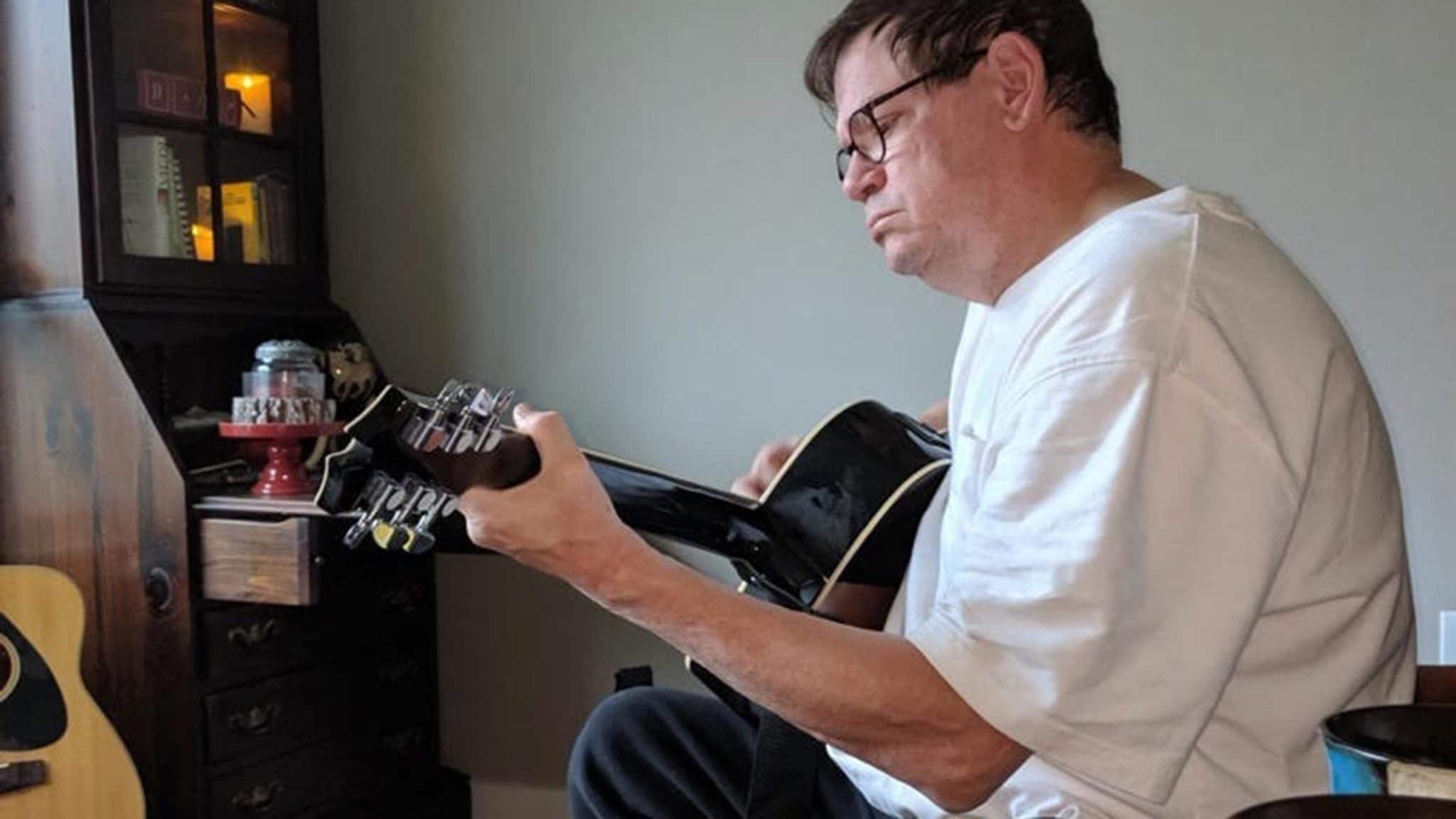Few Kidney Patients Can Access Palliative Care or Hospice. Why?
The phone call came on a sunny spring afternoon earlier this year. When Becky Swain answered, it was one of her husband’s fellow police officers. Bob was okay, but he had been in an accident, Becky was told, and he was currently at Scotty B’s, a local diner in Tenino, Washington known for its down-home cooking and milkshakes.
It wasn’t until Becky pulled into the parking lot that she realized her husband had crashed into Scotty B’s itself. His police cruiser sat crumpled against the side of the diner. Bob had passed out behind the wheel on his way home from the police station — something that had never happened before, although he had long battled diabetes and high blood pressure. A battery of tests at the local hospital couldn’t determine precisely why Bob had lost consciousness, but they did reveal something else: His kidneys were well on their way to failing completely.
PROFIT & LOSS: THE COMPLETE SERIES
Intro | The Market | The Conflicts | The Disparities | The Waiting | The Alternatives
At the rate he was declining, a nephrologist told him that he would be in crisis by the end of the year, and that to survive longer than that, he’d need dialysis and — eventually, if he was lucky — a kidney transplant. The only hitch, Becky said, was that Bob wanted none of it. Faced with what seemed a lifelong gauntlet of blood drawing, catheters, restricted diets, and other interventions — and weighing the uncertainty of a transplant ever becoming available against the battery of other health problems he faced — Bob declined dialysis and instead chose hospice, so that he could live out however many days remained to him at home with his wife and his 130-pound Great Dane, Badge.
He survived through the summer before finally succumbing to complications of his kidney disease at the age of 60. “He was one of the most amazing men I’ve ever known,” Becky said. “He had true calling to be police. He lived his whole life devoted to people, without really caring about himself. And that played out in his decision.”
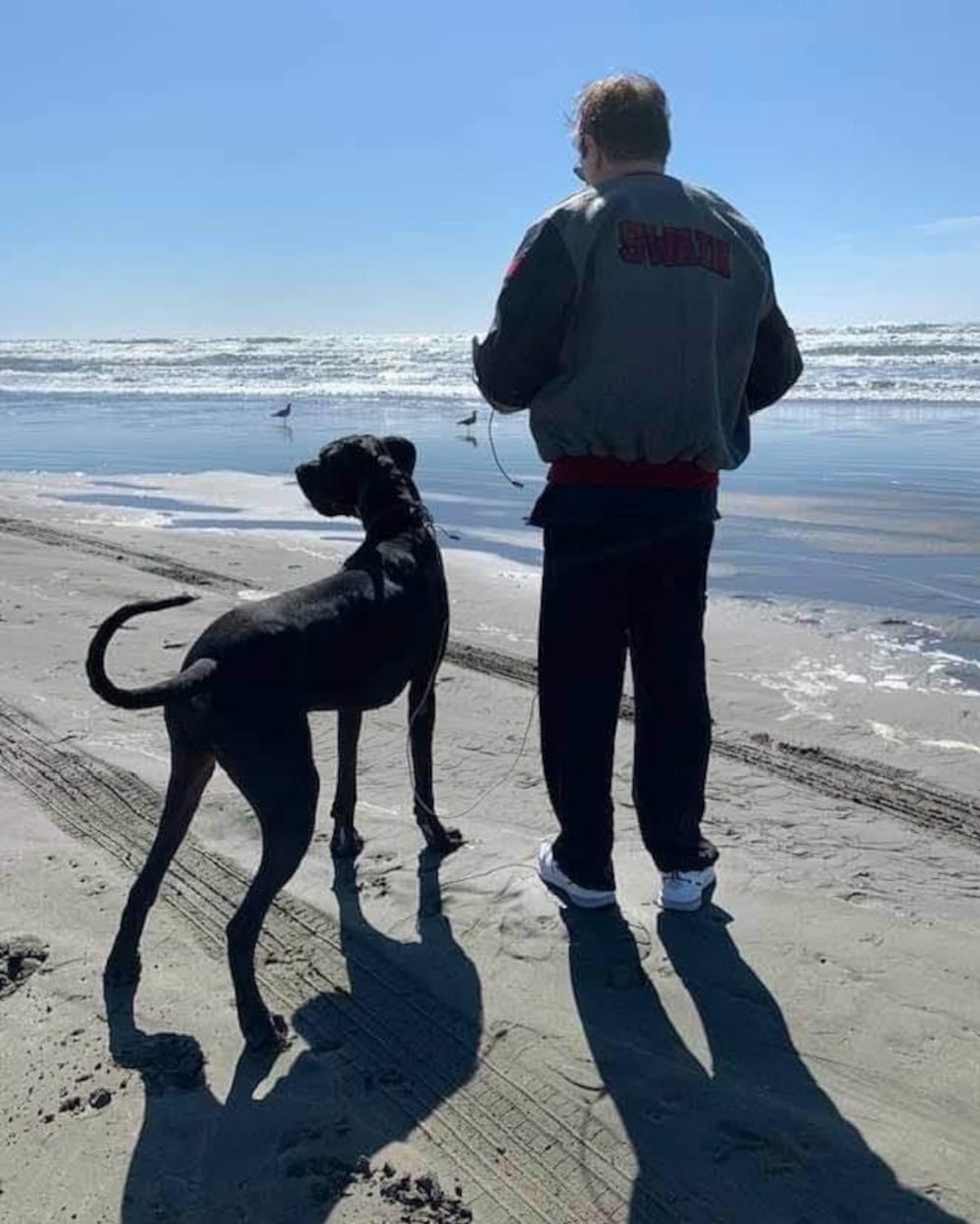
Bob Swain, who died from complications of his kidney disease, on the beach this summer with his dog, Badge. “He lived his whole life devoted to people, without really caring about himself,” Becky Swain said.
Visual: Courtesy of the Swain family
Individuals dying from cancer and, to a growing extent, circulatory and neurological conditions, have increasingly opted for hospice care at the end of life rather than pursuing a cure to the bitter end. Between 2000 and 2012, hospice spending by Medicare skyrocketed more than 400 percent, going from $2.9 billion to $15.1 billion. By 2018, that figure had reached $19.2 billion. Palliative care, which focuses on helping those with serious illness improve their quality of life by alleviating their symptoms, has also seen substantial growth, according to Diane Meier, a palliative care specialist at Mount Sinai Hospital in NYC and director of the Center to Advance Palliative Care.
“Patients with a disease are not just that organ system, or that coronary artery,” Meier said. “That individual issue is surrounded by a whole person.”
Bob Swain’s experience, however, was unusual in that meaningful hospice and palliative options are rarely made available in kidney disease care. Jane Schell, a physician at the University of Pittsburgh who is board certified in both nephrology and palliative care, says that’s partly due to the fact that it still remains hard for nephrologists to predict a patient’s prognosis with any degree of certainty. In addition, few nephrologists have received the kind of training that makes them comfortable helping their patients navigate complex end-of-life decisions. This combination means that many physicians find themselves avoiding these discussions until someone is already at death’s door. As a result, nephrologists often default to starting even their extremely elderly and frail patients on dialysis, the dominant tool of the U.S. kidney care system, despite research suggesting that the process may not actually let them live significantly longer.
“What we have learned, and that patients are teaching us, is that not every patient will get the benefits that they hope for with dialysis,” Schell said.
This hasn’t yet resulted in a significantly greater utilization of hospice care for these patients, however. According to an August 2020 report from the National Hospice and Palliative Care Organization, only 2.3 percent of the 1.55 million Medicare patients enrolled in hospice in 2018 were diagnosed with kidney failure. Research shows that this reluctance to refer these patients to hospice care makes it more likely they’ll be subject to costly and often painful interventions at the end. A 2018 study in JAMA Internal Medicine found that only 20 percent of Medicare patients on dialysis utilized hospice; of those that did, 41 percent were in hospice for three days or fewer before death, resulting in outcomes little different than those who never entered hospice at all. Patients who used hospice for 15 days or more, however, were less likely to undergo invasive procedures or be admitted to the intensive care unit, and had lower medical costs in the last week of life.
Complicating matters even further is the fact that Medicare rules classify dialysis as a “life-extending” treatment, meaning it is not typically covered under Medicare’s hospice benefit. This means that for Medicare-dependent individuals, choosing to continue dialysis often prevents them from also receiving hospice care, says Vanessa Grubbs, a nephrologist at the University of California, San Francisco.
Grubbs and Schell are part of a growing movement of nephrologists pushing for the incorporation of palliative care, advanced care planning, and other person-centered approaches in routine kidney disease treatment. Schell, along with colleague Amar Bansal, opened one of the country’s first combined renal and palliative care clinics in 2012 to treat all chronic kidney disease patients at the University of Pittsburgh Medical Center. The goal is to provide care that the physicians consider more aligned with patient values and preferences, including for those who want to manage their condition with medications and lifestyle changes instead of dialysis.
“The focus is often on living, on decisional support — helping somebody make a decision that’s right for them,” Bansal said. “It helps align what choices they face with kind of the person that they are. And that’s sort of where the joy really is.”
The medical profession has long imagined itself in a battle against death, with an arsenal of increasingly powerful surgeries and therapies at its disposal. When physician Eric Cassell was practicing in the 1970s, however, he began to see the collateral damage from this unceasing duel with mortality. After all, medicine was ultimately doomed to lose.
What Cassell couldn’t ignore was what he perceived as the avoidable suffering this Sisyphean battle created. What his patients nearing the end wanted — what they said they needed — Cassell recalls, was a physician who saw beyond their metastasizing cancer cells or failing organs and treated them as the full individuals that they were: human beings with hopes and dreams and preferences and foibles who also happened to be dying. This was the dawn of palliative care, a movement which extended the principles of hospice care beyond the dying to anyone with life-limiting disease. This includes patients diagnosed with everything from chronic obstructive pulmonary disease, to neurodegenerative conditions, to heart disease and cancer, according to Sara Davison, a palliative care physician at the University of Alberta in Canada.
“People hear ‘palliative’ and they think end of the road, nothing more we can do, end of life terminal care, but it’s not,” she said.
In 2006, palliative medicine was recognized as a medical subspecialty in the U.S., much to Cassell’s dismay. To him, palliative care would ideally become part of standard medical care rather than a field unto itself. “My idea was that what was going to happen was that we would be very successful in the care of the dying, and the idea would spread to the rest of medicine,” Cassell said.
Whether that might one day happen is difficult to say, but what’s clear is that this type of holistic care runs distinctly counter to how most physicians continue to be trained, says Ann O’Hare, a nephrologist at the University of Washington and the Veterans Affairs Puget Sound Health Care System. The biomedical model of health that she and other physicians were taught in medical school focuses on specialization, channeling doctors to develop expertise in diseases related to specific organ systems in the body. Cardiologists treat heart disease. Nephrologists focus on the renal system.
It’s a powerful model, O’Hare says, and life-saving treatments like dialysis and transplantation wouldn’t exist without it. But it works by putting the person as a whole in the background, and teaching physicians to be responsible for just one part of a patient’s body. “What happens under this model is the person gets lost and fragmented,” O’Hare said. “And it can be very difficult, if not impossible, to put the person back together.”
Palliative care, she says, is one way to start making patients whole again, and its increasing influence has paralleled the rise in hospice care. Both types of treatment, which were pioneered in oncology departments, according to Meier, seek to consider people not just as cases of disease, but as impacted individuals, each with their unique tapestry of interests, experiences, and values. These models emphasize, for example, collaboration between patients and physicians in determining not just the best course of treatment for fighting the disease to stave off death for as long as possible, but the course that best preserves the patient’s ability to engage in the activities that are meaningful to their lives and well-being.
At her first meeting with a new palliative care patient, Meier begins by introducing herself and saying that she and her team are there to help the patients with their care. But before she can help, she tells them she needs to understand who they are as a person and invites them to share. Then, she says, “I stop talking.”
Through this exchange, palliative physicians like Meier can gain an understanding of what makes patients tick and what to them makes their lives worth living. For some patients, attending religious services may be a priority; for others, it could be spending time with children and grandchildren. Different types of dialysis have different risks and benefits. So does kidney supportive care, an alternative course of treatment that employs diet changes, exercise, and medication to manage the disease.
A kidney patient receiving palliative care might experience fatigue and severe itching known as pruritis while on dialysis. A renal palliative care specialist like Schell would be looking out for these symptoms, and she might prescribe a medication called gabapentin to relieve the itching, while also adjusting the timing and duration of dialysis to lessen the feelings of fatigue. For those who are using supportive care, also known as conservative care, Schell will review their medications to determine if adjusting the timing, dosage, or particular prescriptions might make the patient feel more energetic, which is particularly important at a time in their lives when they need that energy most.
Patients can transition to hospice care once a physician believes that they will live for less than six months if their illness is allowed to take its natural course. Kidney failure patients on hospice care who stop dialysis can experience fluid build-up that makes it difficult to breathe, along with severe pain and nausea. Schell says that opioid analgesics are useful for alleviating shortness of breath and pain in hospice patients, while other medications can reduce nausea. Simply using pillows to elevate the head can also make it easier to breathe.
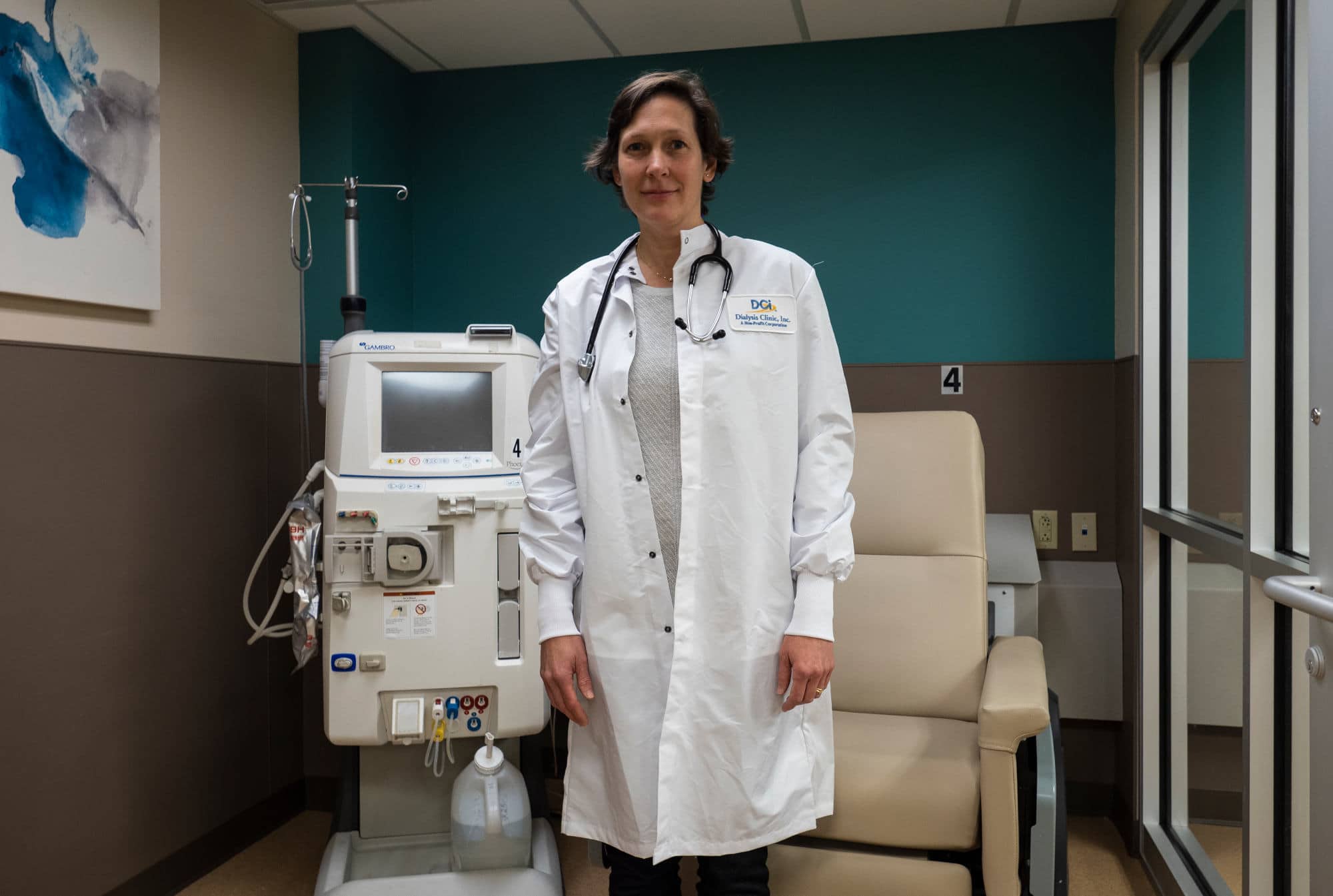
As the use of palliative and hospice care grew in oncology, health policy researchers were able to show that their use not only increased a patient’s quality of life, but also often allowed them to survive longer. A landmark 2010 study of individuals newly diagnosed with metastatic lung cancer who received palliative care at diagnosis died an average of 11.6 months after diagnosis, compared to 8.9 months who received standard care.
In the last decade, palliative medicine has also begun to make inroads into caring for those with serious heart and lung disease, Meier said, as cardiologists and pulmonologists began to recognize the specialty’s benefits to cancer patients.
“Despite all of our advances in science and sub-specializations, we were kind of losing the forest for the trees, meaning we were not taking care of whole people in the context of families and societies,” Meier said.
A major exception to this growth has been in the treatment of adults with kidney disease and kidney failure, the 9th leading cause of death in the U.S., according to the Centers for Disease Control and Prevention. In a 2019 study of 5.23 million hospitalizations in kidney failure patients from 2006 to 2014, only 1.5 percent involved palliative care.
One reason, argues a 2018 paper in the American Journal of Kidney Disease, is simple lack of access, particularly in rural areas of the country. (A recent report found that less than 20 percent of rural hospitals with 50 or more beds have a dedicated palliative care department, and most physicians with this training are concentrated in large urban centers.) The researchers also note that the time-intensive nature of dialysis treatment, which typically involves going to a clinic for a few hours three times a week, can make it hard for patients to add in yet another medical appointment.
Echoing Schell, Keren Ladin of Tufts University says that physicians struggle to predict how long a patient is going to live. This lack of prognostic indicators makes it hard to begin discussions around end-of-life care and hospice until much later in the process, she said. As a result, discussions of kidney failure treatment tend to center around dialysis, even in patients who research has shown will struggle with this form of therapy.
Ladin says that nephrologists often frame the issue as “this patient will die if they don’t start dialysis” — which implies that their death is imminent. While that may be true for some patients, it isn’t always the case, Ladin says — and the research backs her up. A 2015 meta-analysis of 89 studies published between 1976 and 2014 showed that 71 percent of patients treated with supportive care were still alive after one year, compared to between 73 percent to 78 percent of dialysis patients.
Despite these results, the message doesn’t always make it down to patients. When Grubbs interviewed 15 kidney failure patients over 65 years of age and their families, she found nearly all believed that dialysis was the only form of treatment for kidney failure. They also didn’t have a good understanding of the complicated realities of what it meant to be on dialysis, according to the study she published in 2019 in Kidney Medicine.
“Dialysis has a lot of negative side effects,” she said.
At the University of Rochester in New York, nephrologist Fahad Saeed saw many of his patients make this same misjudgment about dialysis so frequently that he began to use a specific term to describe it: dialysis regret. It often occurred in his very elderly kidney failure patients with a host of co-occurring conditions like diabetes, heart disease, and cancer. To study the phenomenon, Saeed and colleagues administered a 41-question survey to 397 dialysis patients asking them about their decision to start dialysis. Over one in five of the respondents said they regretted beginning dialysis. Those that said they had started dialysis to please doctors or family were twice as likely to have dialysis regret. Factors like having a living will and discussing life expectancy with doctors dramatically reduced that risk.
“Currently, the way we’re making decisions, we’re not giving patients enough autonomy to make choices informed by their own values and preferences,” Saeed said. “Input is important, but it should be supportive not directive.”
To O’Hare, these types of discussions with physicians are important because they help patients begin the mental adjustment to life on dialysis and the prospect of a shorter lifespan. “The biggest challenges for patients are often existential challenges, the massive adjustments that they have to make to their ongoing illness, to life on dialysis, and then kind of confronting their own mortality,” she said.
Bob Swain was faced with just such a decision this summer. After being discharged from the hospital, his nephrologist told him his kidneys had a year or two left before they completely failed. If he wanted to live beyond that, he would need dialysis. The conversation never went much further, his wife Becky said, because it seemed so far in the future. More immediately, Bob was trying to manage complications from his diabetes and high blood pressure. Chronic high blood sugar from his diabetes damaged the nerves in his legs and feet, a condition known as neuropathy that left him with a fierce burning sensation.
He also had a pressure sore on his foot that refused to heal. Bob’s podiatrist monitored his wound weekly and, several months after his car accident, decided it was starting to show signs of infection. The doctor wrote a prescription for antibiotics in July, which Bob dutifully took. The drugs, however, destroyed the limited kidney function Bob had left. He needed to make a decision about dialysis immediately.
But Bob’s doctors never really discussed conservative or supportive kidney management, Becky said. It was basically dialysis or bust. Bob talked to his doctors about what dialysis would entail, and Becky said that as soon as he heard that home dialysis meant that he would have to keep his dog, Badge, out of the bedroom at night to prevent infection, she could see he had made up his mind.
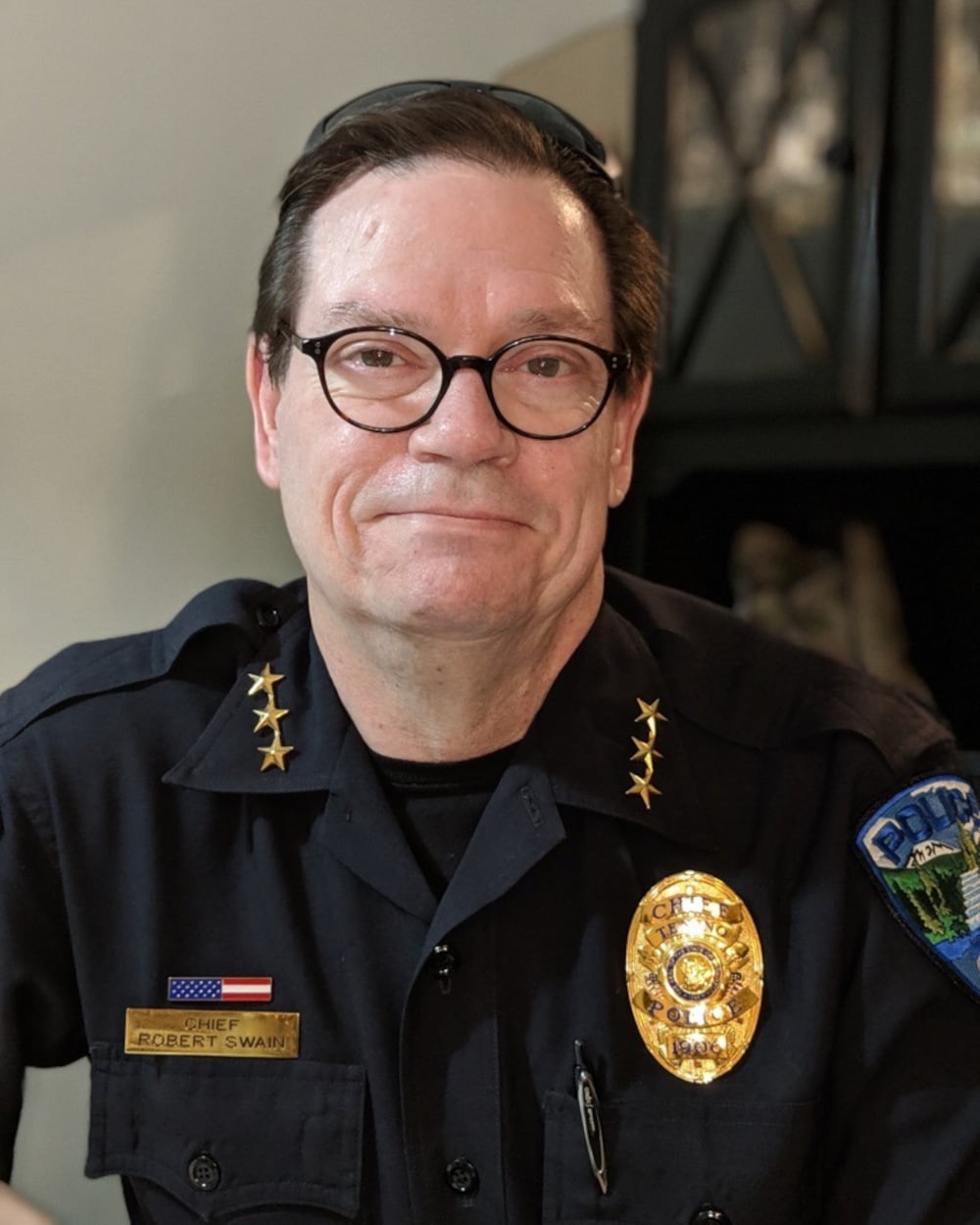
Visual: Courtesy of the Swain family
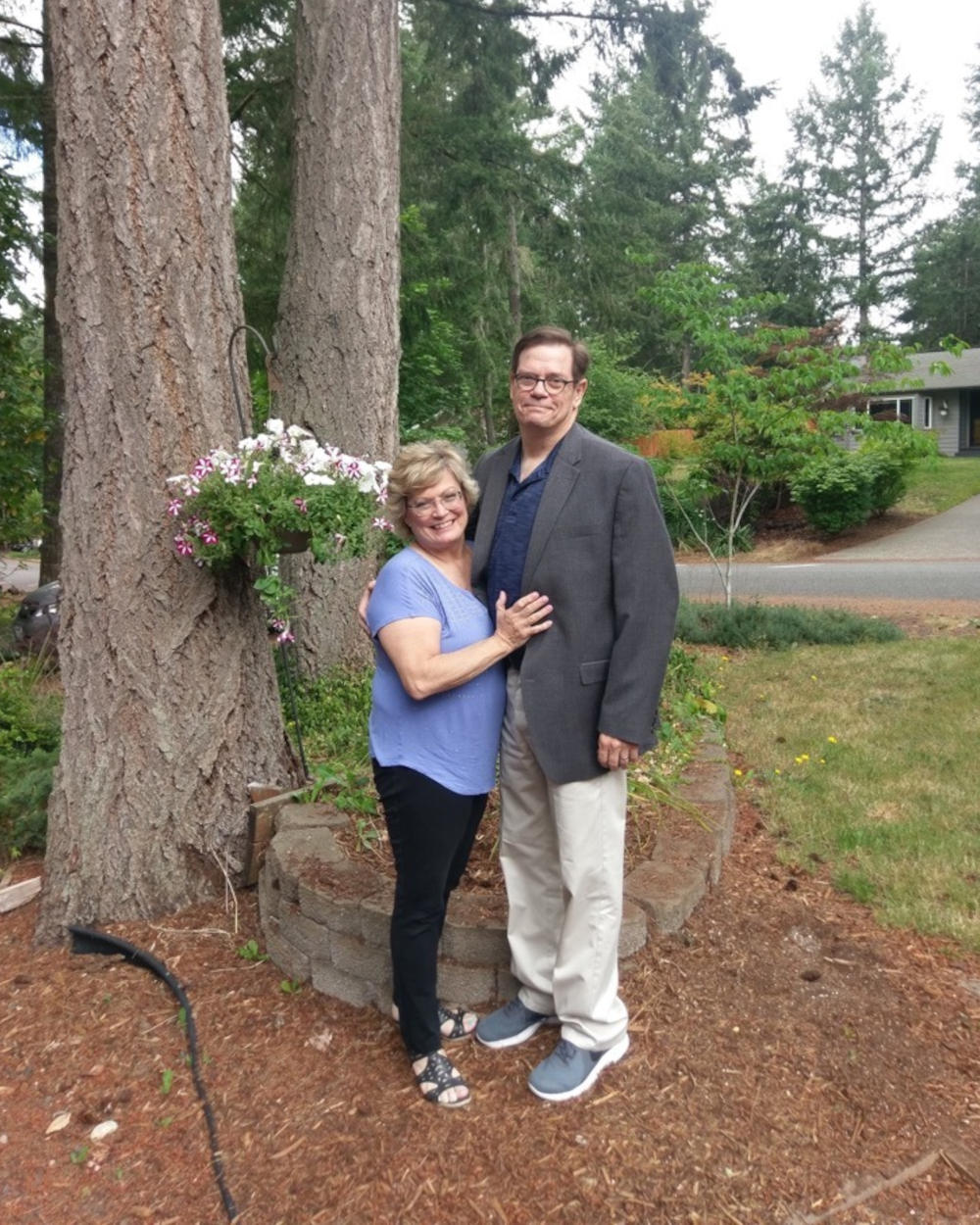
Visual: Courtesy of the Swain family
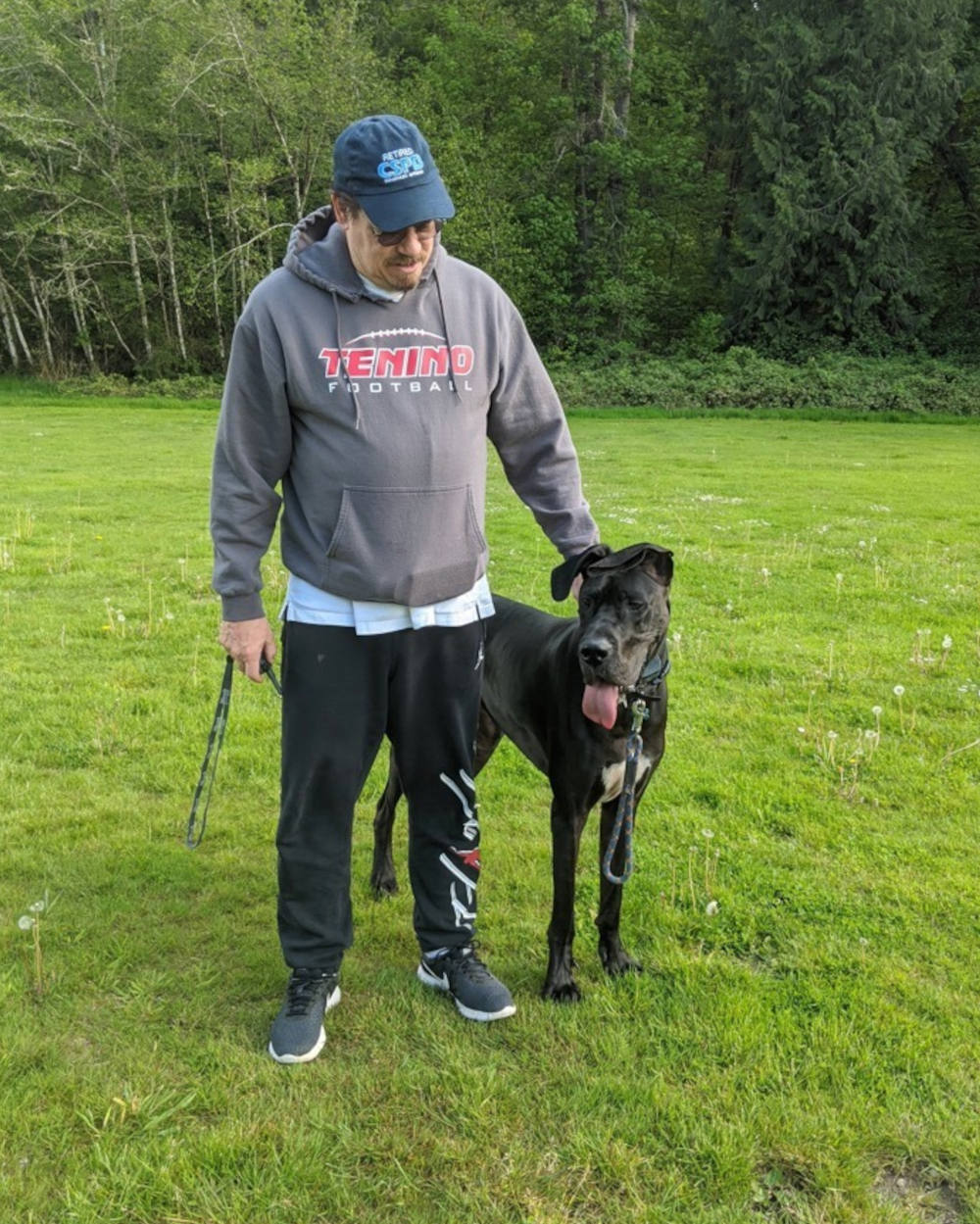
Visual: Courtesy of the Swain family
“The doctors said, ‘Are you sure? Are you sure?’ But he never wavered,” Becky said.
It wasn’t just being deprived of his four-legged sleeping companion. Bob’s doctor also explained that the dialysis wouldn’t improve his neuropathy pain and would mean abrupt and serious restrictions on his food and water intake. The nephrologist also didn’t think Bob would be able to keep working.
To Bob, it just wasn’t worth it. Instead, he opted for hospice care so he could spend his last days at home. “Dialysis would prolong his life, but it would not cure the things that he struggled the most with,” Becky said. She says she told her husband, “The most honorable thing to do as your spouse is to let it be your decision.”
She said that Bob replied, “You will never know how much that means to me. I want quality versus quantity.”
Swain’s choice of hospice care was unusual, even for a middle-aged White professional man with access to good health care like himself. As a young resident in the ICU, Nwamaka Eneanya, now a nephrologist at the University of Pennsylvania, found that many of the renal patients she cared for were “blindsided” by the need to discuss end-of-life issues as no one had previously broached the topic with them.
“The patients that were on dialysis — particularly Black patients — and their families had never had those discussions before,” Eneanya said.
She recalled a 2010 paper published in the New England Journal of Medicine that found the early integration of palliative care — including developing goals of treatment, managing symptoms, and shared decision-making — in the treatment of metastatic lung cancer allowed patients to have a better quality of life and left them less likely to experience symptoms of depression. The patients randomly assigned to the palliative care group also lived an average of 2.7 months longer, despite having less aggressive end-of-life care. To Eneanya, this showed the advantage of including palliative care for the treatment of all kidney failure patients, not just those nearing death.
Having those discussions at all can be challenging, Eneanya says, but it can be even more so for patients with low health literacy, who have a harder time reading prescription labels, developing relationships with doctors and nurses, managing disease symptoms, and attending regular appointments and checkups. A large national survey conducted in 2003 found that 58 percent of African Americans had low health literacy, compared to only 28 percent of Whites. Racial and ethnic minorities also tend to show a preference for more aggressive end-of-life treatment, something that one 2016 study showed might be the result of low health literacy. Whatever the cause, an August 2020 report from the National Hospice and Palliative Care Organization shows that White people are overrepresented among Medicare enrollees in hospice, while African Americans and Hispanics are underrepresented.
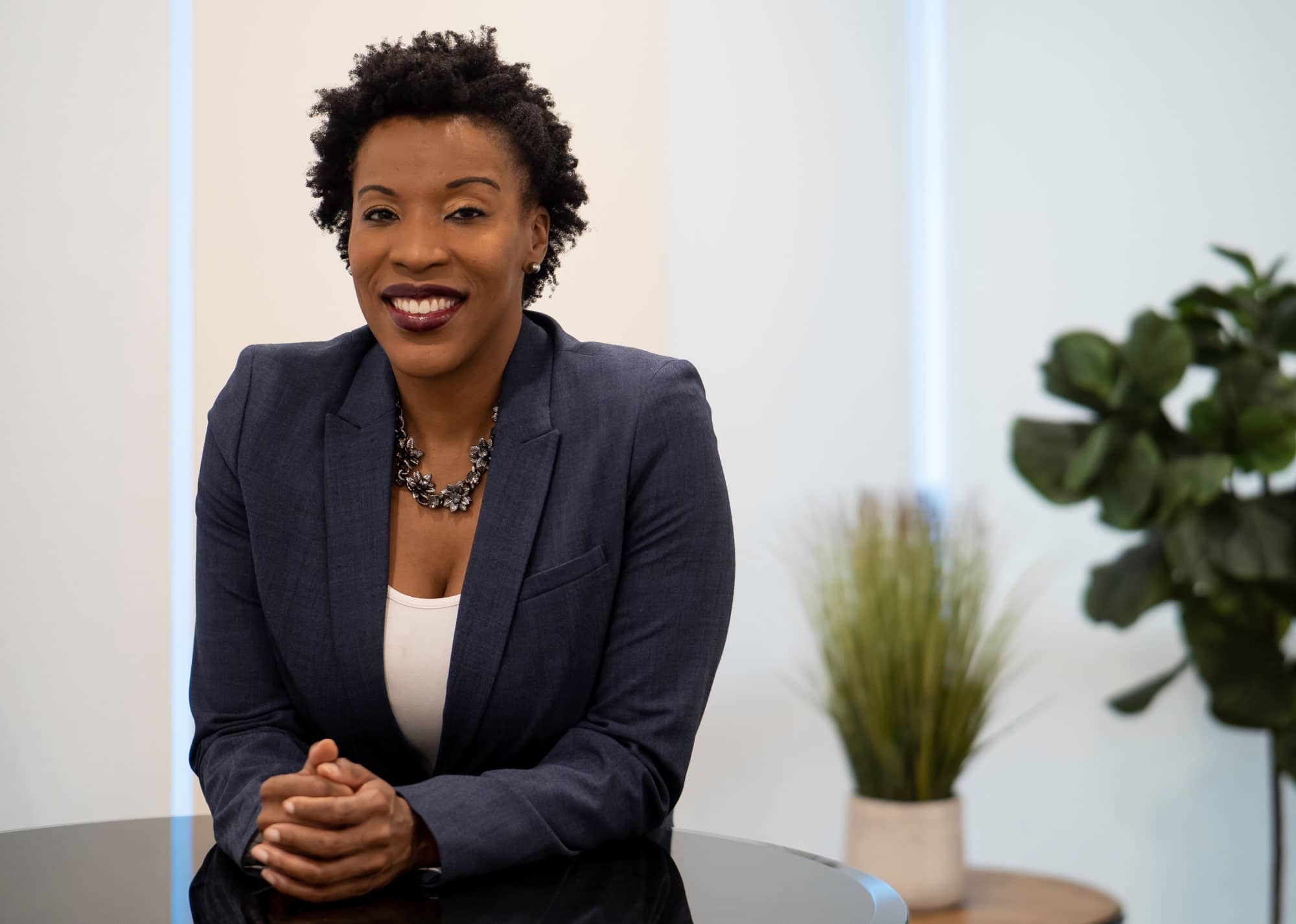
Eneanya’s own work in patients with severe kidney disease showed that Black patients are less familiar with hospice than their White counterparts and were less likely to have talked about their preferences for end-of-life care with their physician. Eneanya suspects that physician bias may be playing a role here. Nephrologists may assume that since so few of their minority patients broach the subject, they just aren’t interested, and so they simply don’t bother to ask, she says. Alternately, physicians may be describing hospice in a way that is off-putting or offensive to minority patients.
Other researchers have shown that those with kidney failure are hungry for information about their prognosis, even when their time left is limited. A 2018 study by Ladin and colleagues showed that less than 30 percent of dialysis patients understood common terms used in end-of-life care planning, such as prognosis, hospice, quality of life, and intervention. To Eneanya, this represented a crucial opportunity for her to help her patients, especially those with low health literacy, learn more about their kidney disease so that they can both better understand their prognosis and make more informed decisions about their treatment. This, in turn, will help patients discuss their end-of-life wishes with their treatment teams and family members in the earlier stages of kidney failure rather than at the end.
Understanding a patient’s end-of-life preferences is especially important as they get older. In the 1960s, when dialysis first became available, only 8.1 percent of those starting dialysis were age 55 or older, but, according to the American Association of Kidney Patients, the average age of someone who starts dialysis in the U.S. is now 64 years. Before flattening out over the past decade, the increase in rates of kidney failure over the previous three decades had been sharpest in those age 75 and older, many of whom also have diabetes, high blood pressure, and other chronic diseases.
These trends are evident in the survival rates of patients with chronic kidney disease. Of the 300,000 people receiving in-center dialysis on January 1, 2006, 60 percent survived less than five years and 20 percent survived more than 10 years. However, O’Hare and colleagues found in a 2019 study in JAMA Internal Medicine that the patients they surveyed routinely overestimated their life expectancy on dialysis. And when UCSF’s Grubbs and her colleagues asked older kidney failure patients what they thought about their treatment options for the 2019 Kidney Medicine paper, many said they felt dialysis was their only choice.
What jolted her understanding of a patient’s potential dissatisfaction with dialysis was when an elderly Chinese-American woman Grubbs had treated briefly before she started on dialysis died by suicide. Grubbs had wanted to tell the patient and her family about supportive kidney management for her renal failure as an alternative, but when Grubbs tried to bring up the subject with the patient and her granddaughter, they reacted negatively. It was almost like they felt Grubbs was trying to kill the woman, so Grubbs dropped the subject. After she learned of her patient’s suicide, Grubbs dedicated much of her career towards preventing this kind of distress in other patients.
“She supposedly had all this support around her, and she felt no other way out,” Grubbs said. “And I had been in a position where I could have, I should have, maybe done something different.”
Grubbs realized that even patients who likely had less than a year to live were treated with the same aggressive dialysis prescription as an otherwise healthy 30-year-old waiting for a transplant. They had to spend the same amount of time hooked up to a machine and follow the same restrictive diet to have their dialysis be considered “adequate.” Grubbs wanted to change this mindset.
“Instead of so much being focused on the disease and making all the lab tests pretty and meeting all the guidelines for maximum payment, that instead we shift the focus to ‘What does this person need to have the rest of their time be as good as possible?’” she said.
If that meant accepting a higher blood phosphorous level so that person could have an ice cream, so be it. If that meant shorter times hooked up to the dialysis machine or fewer sessions per week, no problem. Grubbs called this palliative dialysis, and she thought it provided the perfect solution for her kidney failure patients who, in other circumstances, would have qualified for a hospice diagnosis. But she immediately ran into a huge hurdle: The “life-extending” designation of dialysis by Medicare for people with kidney failure.
To access the hospice benefit through Medicare, a person has to stop their normal coverage and enroll in the hospice benefit. Although the payments are still technically coming through Medicare, the hospice benefit only covers pain relief and symptom management interventions. In most cases, this means that individuals depending on Medicare can’t receive dialysis and hospice care simultaneously — even if a hospice patient might be given several more months to live if they stayed on dialysis.
It’s one of the major reasons why only around one in five dialysis patients make use of hospice care, and Grubbs has made it her personal mission to change that statistic through the use of palliative dialysis. And that means changing how health care measures dialysis success.
“People talk about survival, but we don’t talk about quality of life,” she said.
At the University of Pittsburgh Medical Center, Schell and Bansal have spent the last several years building a renal palliative care clinic, one that combines the ability to use palliative dialysis, along with supportive kidney management. Importantly, they are part of an experimental pilot program with Medicare that allows patients to enroll in hospice and continue dialysis through a nonprofit dialysis clinic where Schell is also medical director. To her, providing better care means first understanding your patient.
“In palliative care, we don’t often know the right answer,” she said. “At the end of the day, it’s our job to be a guide for our patients and families. Ultimately, they make the decision with our guidance and our help, and it may be different than what we expected or what we might choose for ourselves.”
The first difference Bob Swain noticed when he began hospice care was that his pain management improved. When a nurse placed a lidocaine patch on Swain’s left leg to control his unrelenting neuropathy pain, “all of a sudden, the pain went away,” Becky said. After Swain was discharged in late August, hospice nurses visited the house multiple times a week to evaluate Swain’s condition and monitor his pain levels. Becky says that Badge, Swain’s Great Dane, nursed him when his official team wasn’t at the house.
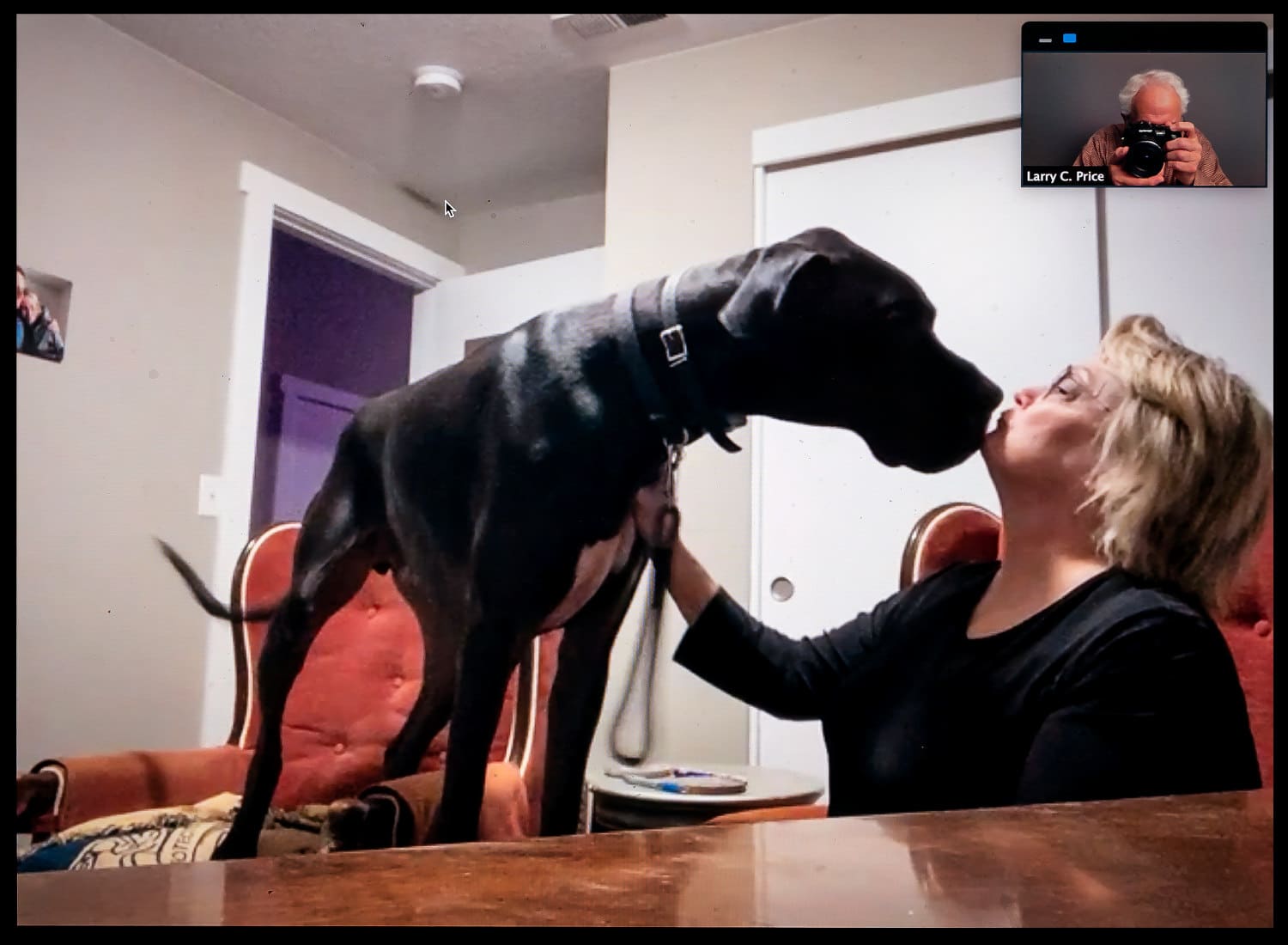
Despite everyone’s hopes and efforts, Swain’s condition declined rapidly. Within a week, he was spending most of his time asleep or unconscious. Fluid began to build up in his body, giving him a swollen, puffy appearance. Breathing became a struggle. High doses of morphine and other painkillers, however, kept Swain comfortable, as did the constant notes of Swain’s favorite Pandora station based around MercyMe, a contemporary Christian music group. Becky says she’s comforted by how at peace her husband was with his decision, and how little he suffered in his last days.
Not long after he was discharged from the hospital in August, he sat with Becky in his truck in the parking lot of the local Hobby Lobby after one of his many medical appointments. Becky says he turned to her and told her that she had brought his life great love. He noted that he had enjoyed a 40-year career in a job that he was passionate about. His kids were grown and in a good place, the grandchildren were thriving, and his relationship with his God was a good one, he said. He was confident that he knew where he’d be going when he died. “My life,” Becky recalled him saying, “is complete.”
And on Sept. 20, 2020, it was.
This series was supported in part by the National Institute for Health Care Management Foundation.
Carrie Arnold is an award-winning freelance science journalist based in Virginia. In addition to Undark, her work has appeared with Scientific American, STAT, National Geographic, Wired, and The New York Times, among other publications.
Larry C. Price is a two-time Pulitzer Prize-winning documentary photographer and multimedia journalist based in Dayton, Ohio. He previously produced award-winning photography and video footage for Undark’s Breathtaking series on air pollution, which won a George Polk Award for Environmental Reporting in 2018.
PROFIT & LOSS: THE COMPLETE SERIES










